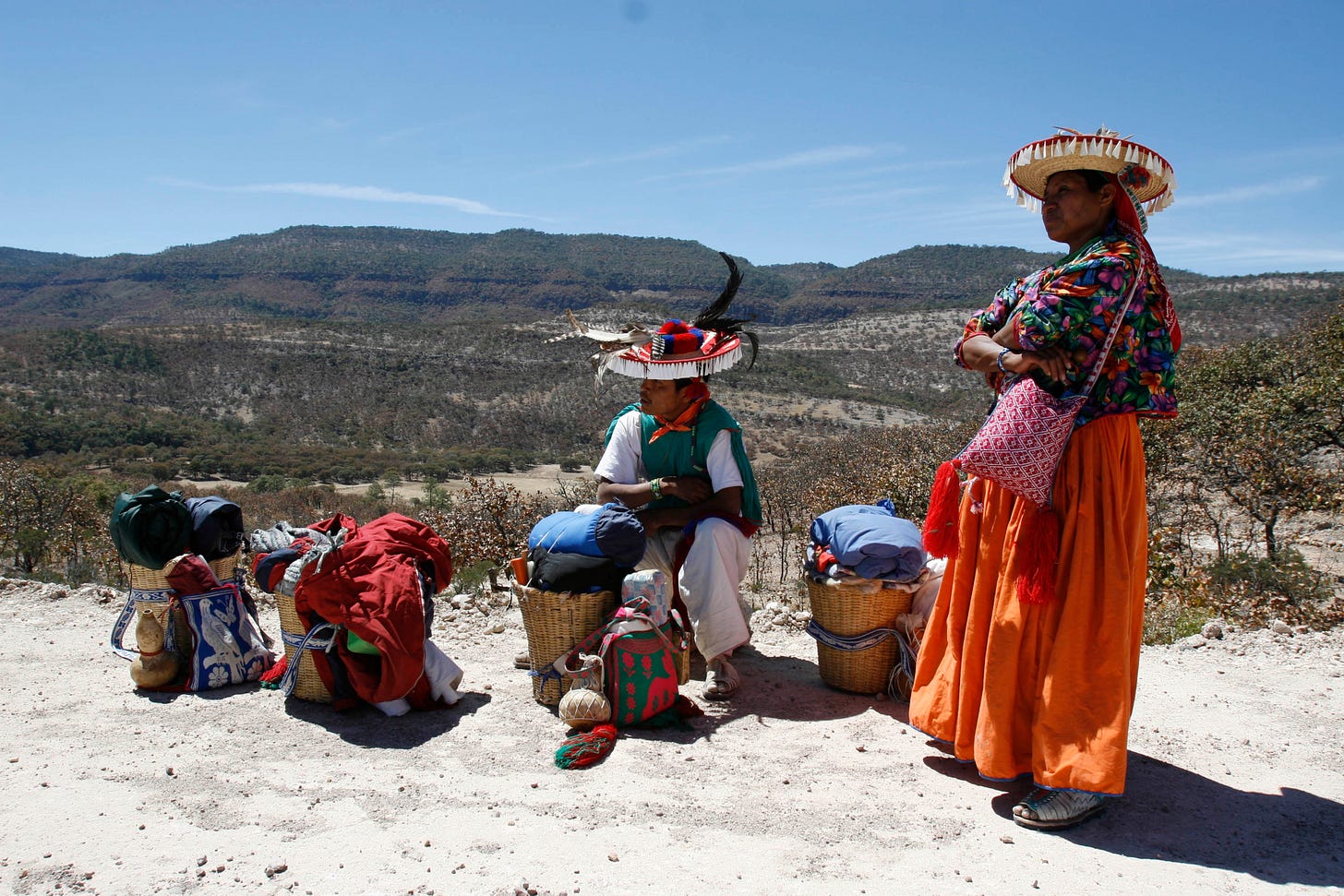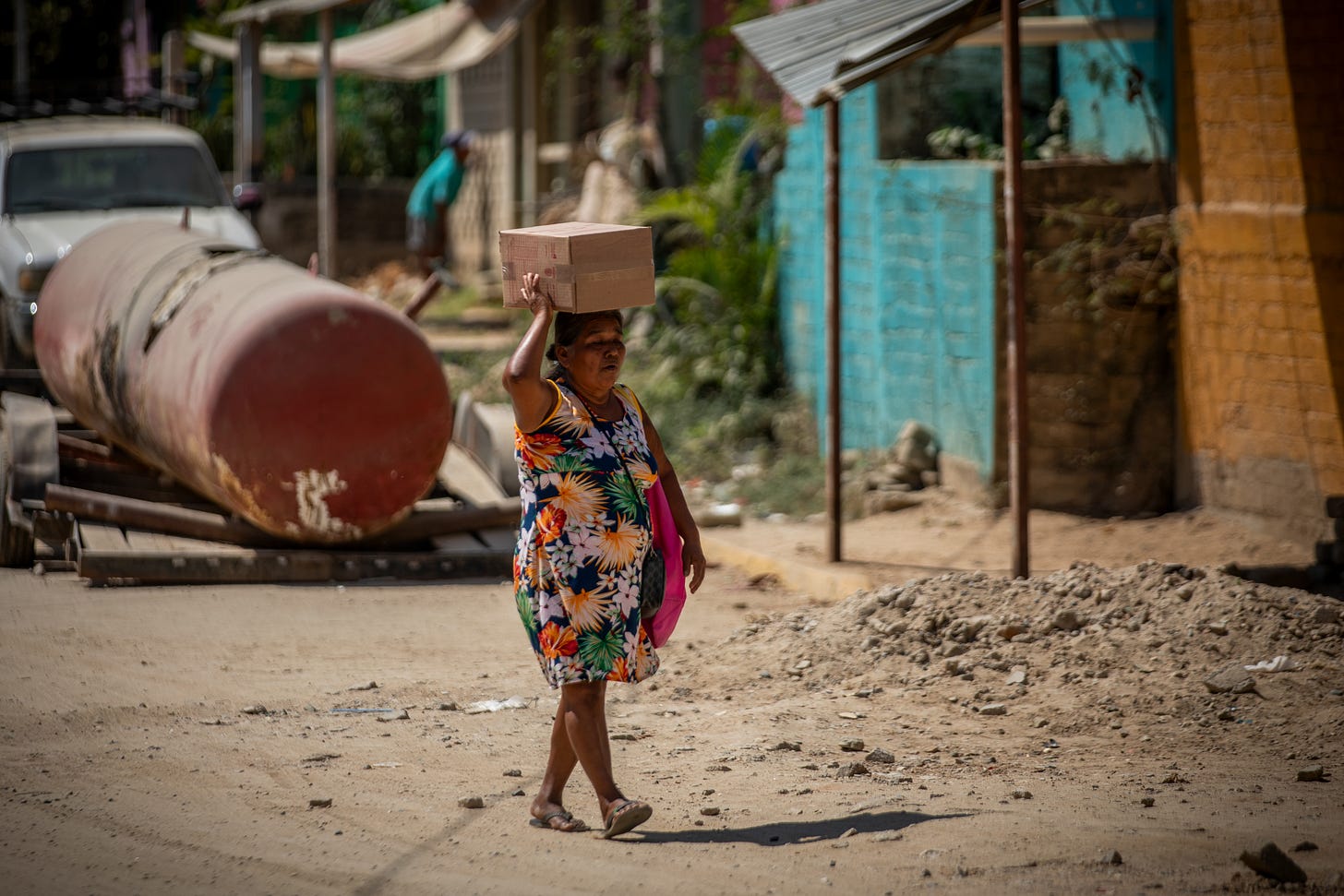18 July 25 | The Wixárika Route Designated a World Heritage Site by UNESCO
Also: Efforts to preserve traditional dances. Tomatoes as a major opportunity. Indigenous communities targeted for making progress. “There is no alternative to multilateralism,” says Lula da Silva.
Lea La Jornada Internacional en español aquí.
Facing the “monster” of mining concessions

A pilgrimage route over 500 kilometers long, followed by the Wixárika people through five Mexican states, has been officially recognized as a UNESCO World Cultural and Natural Heritage Site—culminating more than 30 years of struggle.
“The Huichol Route is a serial property of 20 sites, spanning over 500 km across five states in north-central Mexico. This ‘“braid of trails’” connects sacred landscapes central to the spiritual and cultural practices of the Wixárika Indigenous Peoples,” reported UNESCO in its official designation. “Beginning in the Huichol Sierra, the route leads to Wirikuta (…) Traversing diverse ecological regions, the route supports rituals tied to ancestral deities, agriculture, and community well-being. Known as “Tatehuarí Huajuyé” or the Path of Our Grandfather Fire, it embodies deep spiritual and environmental significance.”
According to Mexico’s National Institute of Anthropology and History (INAH), the exceptional universal value of the Wixárika route lies in the connection between sacred sites and key elements of their tradition—fire, rain, corn, peyote, the golden eagle, the wolf, and the deer—through sophisticated traditional rituals including cultivation, hunting, gathering, and fishing. INAH emphasized that the ceremonial pilgrimages to natural sacred sites, ancestral agroforestry practices, vernacular architecture, temple design, and the ritual cycles centered on Wixárika corn cultivation represent the most exceptional living testimony of ancient Mesoamerican cultural models.
“This is a very important event for the Wixárika people and for the people of Mexico,” said President Claudia Sheinbaum. INAH added that the recognition is “an exceptional testimony to the persistence of Wixárika cultural traditions.” The Wixárika communities face a complex web of challenges, including widespread insecurity, poverty, unresolved land disputes, threats to their sacred sites, and ongoing struggles for the recognition of their autonomy. For at least two decades, their territory has become a strategic corridor for drug trafficking. Despite repeated calls for intervention from federal authorities, the communities have largely been ignored—even though local and state officials are reportedly aware of the presence of criminal groups and have taken no meaningful action.
Their long struggle dates back at least to 1998, but it gained significant momentum around 2009 when they discovered the presence of mining concessions in the Wirikuta area. “How could the Mexican state itself have approved them?” asks Santos de la Cruz, a lawyer and activist representing the Wixárika Regional Council for the Defense of Wirikuta.
In an interview with La Jornada, De la Cruz explained that in the past those making decisions were not representatives of the community. He stressed that following UNESCO's designation, decision-making must now include Wixárika leaders and authorities, working in coordination with relevant government agencies. One of the community’s main demands is for the area to be designated a mining-free zone. Legal actions are underway to protect it, and efforts are being made to elevate its status as a federally protected natural area—with Wixárika participation.
De la Cruz emphasized, “We have never claimed the land is or should be ours. We recognize there are communal landholders (ejidos) in the area. All we ask is for respect and a space free of threats. It would be vital for the federal government to support economic projects for the local inhabitants and ejido members, because without opportunities, they turn to mining.” Magdalena Gómez, a columnist for La Jornada and an expert in Indigenous law, welcomed the UNESCO decision but added: “We'll have to see what practical and regulatory implications this historic recognition truly holds for the Wixárika people.”
Indeed, just four days after UNESCO’s announcement, the Wixárika Regional Council stated: “The threats to our sacred territories remain.”

The Quote:
Terrible things are happening outside. At any time of night and day, poor helpless people are being dragged out of their homes. Families are torn apart; men, women and children are separated. Children come home from school to find that their parents have disappeared.
-Anne Frank January 13, 1943
In Case You Missed It
◻️ Preserving traditional dances. These dances are a living testament to the identity, history, and beliefs of communities—interweaving religious elements, ancestral symbolism, and everyday rural stories, say organizers of the Azcaxuch Dance Festival in the State of Mexico.
◻️ Tomato troubles. Tariffs on tomatoes are just the latest blow to the Mexican economy by the U.S. government. Mexican tomato producers are joining forces with steel, aluminum, and auto industries to push back against the trade war. “To escape U.S. economic extortion, it’s urgent to seek alternative markets,” warns trade expert Fernando de Mateo. CEPAL adds: “Trump’s tariff policies present Latin America with a major opportunity to deepen economic integration, thanks to its large internal market and potential for diversification.”
◻️ The war on migrants. A federal judge in Los Angeles temporarily banned masked federal agents from kidnapping immigrants—but these raids continue across the country. Despite a media campaign portraying the government’s actions as defending the nation from an “illegal invasion,” U.S. public opinion is shifting against the official narrative.
◻️ Oaxaca: 247 femicide victims in 30 months. “Femicide violence continues to claim lives with brutality and cruelty,” reports the Rosario Castellanos Women’s Studies Group. “Oaxaca is facing an alarming rise in violence, especially in the capital and Isthmus of Tehuantepec.” They add that “justice is slow, investigations are inadequate, and authorities have yet to act with the urgency this crisis demands.”
◻️ Targeted because they’re advancing: Ojarasca reports on Indigenous struggles in Michoacán, Oaxaca, Puebla, and Chihuahua—bastions of community self-determination and defenders of cultural and natural resources. “Today, nearly any community with extractable resources—gold, sand, water, timber, wind, beaches, forests, or jungle—is at risk. These territories are also routes for trafficking people and drugs.” The extractive industry here is seen as a new kind of conquest.
◻️ Lula: no alternative to multilateralism. Brazil’s president warns of the looming collapse of the global order built after 1945. The solution, he says, is not to abandon multilateralism, but to rebuild it on fairer, more inclusive foundations that can meet the demands of a humanity afraid for its future. “Only then will we stop being passive witnesses to growing inequality, senseless wars, and the destruction of our own planet.”
◻️ Uncertainty in the vineyards again? Unlike the past, what weighs most heavily now is not drought or large-scale farming, but a series of political decisions by the Trump administration, writes Víctor M. Quintana. These decisions not only harm U.S. agriculture and economy, but also disrupt the global food market—with unpredictable consequences: surplus production left unsold in some regions; food weaponized politically and hunger rising in other places.
◻️ No gender equality, no peace: “Fifty years ago, Mexico City hosted the first UN World Conference on Women,” recalls Ana Güezmes García of CEPAL. Fifty years later, “I imagine a great braid of care woven from communities to global forums… responding to historical demands with collective action,” she says, as Mexico prepares to host the next regional conference—this time with a woman president for the first time.
🎧 What We’re Listening To
“Nekakaima newaruweiyati”. The route of my deities, by Wixárika poet Angélica Ortiz







